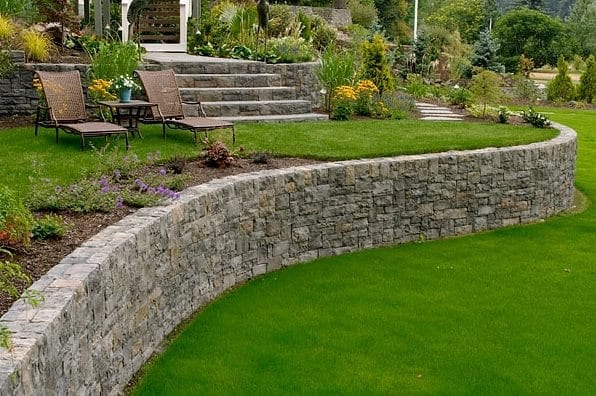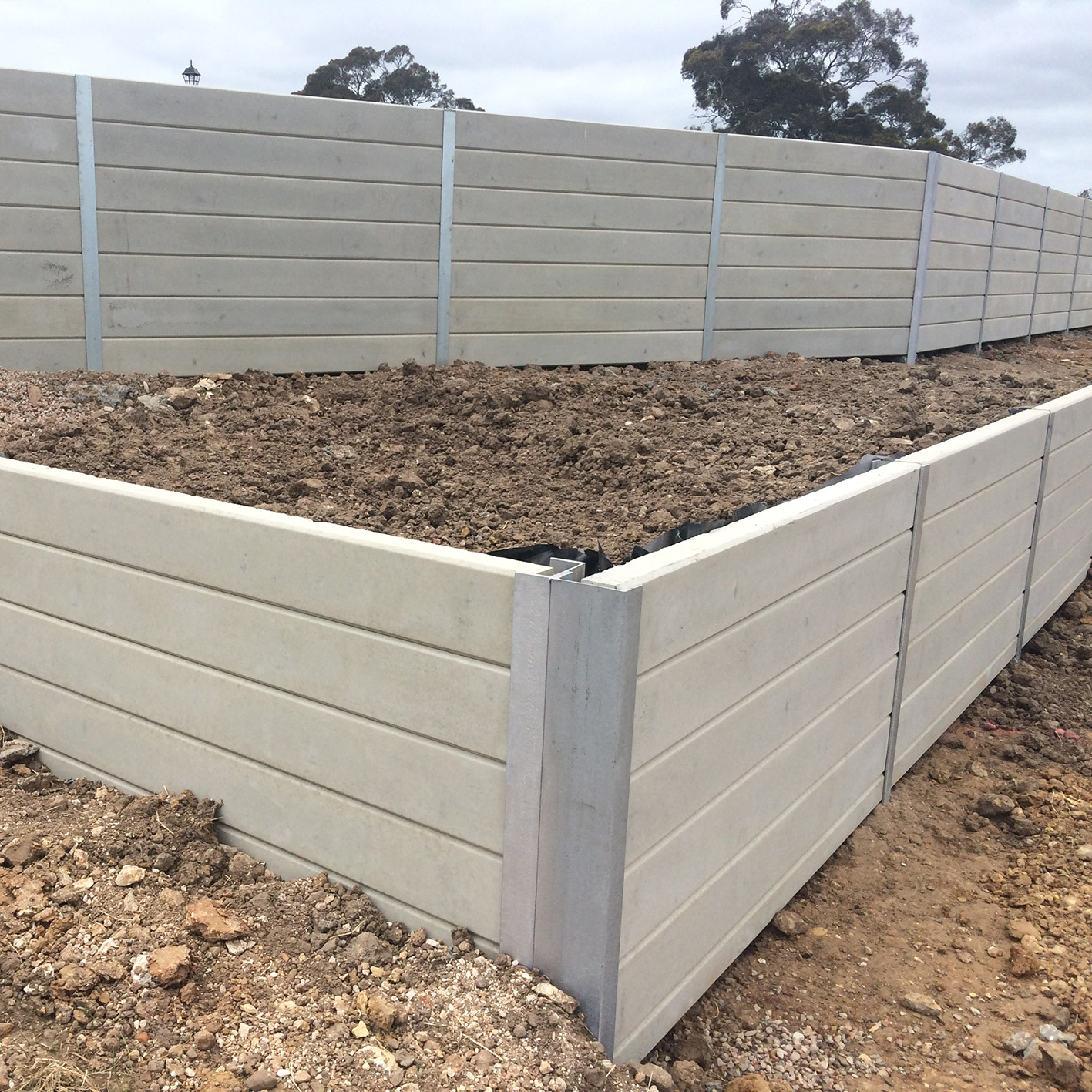Enhancing Property Stability: The Function of Retaining Walls in Soil Retention and Erosion Control
Retaining walls stand as silent guardians, playing a crucial function in soil retention and erosion control. By exploring the nuances of different types, layout factors to consider, construction strategies, and maintenance pointers linked with keeping wall surfaces, a much deeper understanding of their crucial function in improving building stability arises.
Value of Retaining Walls in Security
Maintaining walls play a vital function in holding back soil, avoiding erosion, and producing level surfaces in sloped locations. By giving architectural assistance, keeping wall surfaces aid to redistribute side stress caused by dirt, protecting against landslides and slippage.
Keeping walls are specifically vital in uneven or uneven terrains where dirt disintegration is an usual incident. Without ample support, soil disintegration can result in the degradation of landscapes, compromising the honesty of frameworks and posturing threats to inhabitants. Retaining wall surfaces function as obstacles, stabilizing the soil and avoiding it from shifting downhill throughout heavy rainfall or various other environmental stressors.
In addition, retaining walls offer long-term benefits by lowering maintenance expenses related to soil erosion and land instability. By purchasing well-designed retaining wall surfaces, home proprietors can guarantee the durability and sustainability of their landscapes while promoting a secure and aesthetically enticing environment.

Kinds of Retaining Walls for Erosion Control
Frequently utilized in landscaping and civil engineering tasks, numerous sorts of keeping walls function as effective solutions for disintegration control in diverse surface problems. Gravity keeping walls are tough structures that count on their weight to stand up to the stress of the soil behind them. They appropriate for low to medium elevation applications and are usually constructed from concrete or rock. Cantilever keeping wall surfaces, on the various other hand, are created with a thicker base and make use of a bar arm to withstand the soil stress. These walls are commonly utilized in areas where space is restricted.
For taller walls or where area is a constraint, secured retaining wall surfaces are often used. When picking the suitable kind of preserving wall surface for disintegration control, variables such as dirt structure, wall elevation, and site conditions have to be carefully thought about to guarantee durable security and effectiveness.
Layout Factors To Consider for Dirt Retention
The height and area of the maintaining wall surface are essential elements that influence the general layout. Engineers should likewise consider the stress put in by the preserved dirt and possible lateral loads to make sure the framework's security over time.
Moreover, the product choice for the retaining wall surface is important in improving durability and capability. Concrete, hardwood, gabion baskets, and natural stone prevail materials made use of in preserving wall building and construction, each with its special advantages and factors to consider. Appropriate drain devices, such as weep openings and French drains, should be integrated right into the style to stop water build-up behind the wall surface, click for more which can bring about architectural failure and erosion.
Building Techniques for Retaining Walls
When executing layout considerations for effective dirt retention, the building methods for maintaining wall surfaces play an important role in making sure structural integrity and lasting security. One common technique is the gravity wall, which counts on the weight and mass of the wall visit the website surface itself to resist the pressure of the kept dirt.
Another commonly made use of building and construction strategy is the cantilevered wall, which utilizes a concrete slab structure that prolongs backwards into the retained soil. This layout gives additional stability and is suitable for medium to high retaining wall surfaces. For taller frameworks, strengthened dirt strategies such as making use of geogrids or dirt nails can be employed to enhance the wall's stamina and stability.

Maintenance Tips for Building Security
To make certain long-term property security, routine maintenance techniques are essential for maintaining the stability of preserving walls and avoiding disintegration problems. Cleansing the surface area of the retaining walls can also assist maintain their structural honesty by removing dirt, debris, and greenery that can compromise the wall surface over time.
Along with aesthetic assessments and cleansing, it is necessary to inspect the drainage systems connected with the preserving walls. Guaranteeing that drains pipes are clear of obstructions and working effectively can avoid water buildup behind the wall surfaces, which can bring about stress and possible failing. Appropriately working drain systems are vital for taking care of water circulation and decreasing the threat of erosion.
Regularly monitoring and preserving preserving walls according to these ideas can expand their life expectancy and add to the overall stability of the property.
Final Thought
To conclude, maintaining wall surfaces play an important role in improving property stability by stopping dirt erosion and keeping soil in position. By utilizing different sorts of taking into consideration and retaining walls design and building methods, homeowner can efficiently control erosion and keep the honesty of their land. Routine upkeep of maintaining wall surfaces is important to guarantee lasting stability and security against disintegration. Appropriately built and preserved keeping walls are crucial elements in protecting residential or commercial property security.
For taller walls or where space is a restriction, secured preserving walls are usually used. These wall surfaces make use of cables or strips that are secured right into the dirt or rock behind the wall to provide additional support. When picking the suitable type of retaining wall for erosion control, variables such as soil structure, wall surface elevation, and site problems have to be meticulously thought about to make sure long-lasting security and effectiveness.
One usual strategy is the gravity wall surface, which relies on the weight and mass of the wall itself to resist the stress of the kept dirt. Cleaning up the surface of the keeping walls can additionally aid preserve their architectural stability by getting rid of dust, debris, and greenery that can weaken the wall over time.